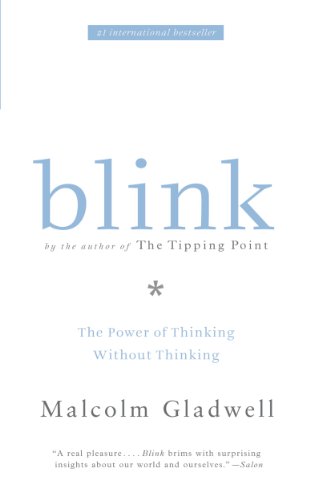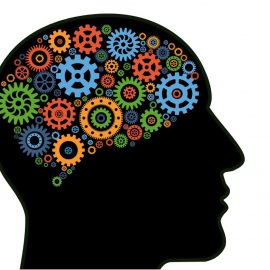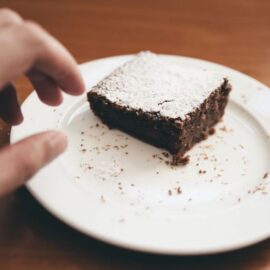

This article is an excerpt from the Shortform summary of "Blink" by Malcolm Gladwell. Shortform has the world's best summaries of books you should be reading.
Like this article? Sign up for a free trial here .
Why do we make such bad decisions sometimes? What can we do to make better decisions?
The truth is, the fact that we don’t always know what we want or like is why we make bad decisions. Keep reading to discover how we can be oblivious to our own preferences and why this hurts our decision-making process.
Why We Make Bad Decisions: We Don’t Always Know What We Like
Without structure, thin-slicing, or making intuitive decisions, isn’t as effective as it could be. Thin-slicing also doesn’t work out of context. This contributes to why we make bad decisions.
For example, love lab researcher John Gottman can predict the future of your marriage after 15 minutes of observation. But he can only do this if he’s observing you and your spouse in the right context—in this case, if you’re discussing something relevant to your relationship. He won’t have the same insight watching you and your spouse play Ping-Pong, for instance.
Context also matters when we make decisions about what we like and don’t like. When we’re assessing a particular food, product, or type of music, both our rational minds and our guts may say we don’t like something that we actually like (or have the potential to like). Sometimes, we don’t know what we want or like because we’re thin-slicing out of context. This is why we make bad decisions.
Let’s look at three reasons why we make bad decisions when it comes to knowing what we like.
Why We Make Bad Decisions, Reason #1: Sensation Transference
Sensation transference is when the way a product looks influences the way we experience it. In other words, we don’t distinguish between the product and its packaging. The packaging is part of the product, not independent of it. This could be why we make bad decisions.
When we judge a product as good or bad, the product’s packaging influences that judgment. For example, no one wanted to buy margarine in the 1940s. They didn’t like the way it tasted.
At the time, margarine was white and unappealing. Researchers discovered that if they colored it yellow to make it look like butter, and wrapped it in foil, which was a sign of high-quality, people thought that margarine tasted a lot better.
Sometimes, what we “taste” has nothing to do with flavor and everything to do with packaging. Thin-slicing, and the ability to judge a product objectively, fails when the unconscious mind is distracted by irrelevant information, like a product’s packaging. You may make a bad decision because you’re making that decision based on the packaging, not the product itself. Judging the wrong criteria is one reason why we make bad decisions.
Why We Make Bad Decisions, Reason #2: Unfamiliarity
Sometimes, we dislike something for no other reason than that it’s unfamiliar. We don’t like what we don’t know. We taste, hear, or watch something different and the unconscious mind automatically registers it as bad.
For example, television classics All in the Family and The Mary Tyler Moore Show almost didn’t make it to the air because the hundreds of viewers in market testing hated them. They thought that Family’s Archie Bunker was too abrasive and that career-woman Mary was a “loser.”
These sitcoms became two of the most successful in history. Were the opinions of initial viewers just different than those of the general public?
Probably not. Viewers thought that they hated these shows, but really, they were just shocked by them. Once they got used to them, they realized that they actually enjoyed them.
Thin-slicing fails when the unconscious mind has no previous experiences to which to compare the new experience. Unfamiliarity is another reason why we make bad decisions.
Why We Make Bad Decisions, Reason #3: Lack of Expertise
Experts aren’t fooled by a product’s packaging and aren’t put off by unfamiliarity. When judging something in their area of expertise, they’re better at knowing what they truly like because they have the experience to interpret their snap judgments.
They have the training to know what they like and the vocabulary to explain it.
Training
Experts learn how to match their unconscious feelings about a food or an object to a formal aspect of that food or object. This necessarily changes their first impressions, or snap judgments.
For example, professional food tasters spend decades developing the skills to judge foods objectively. They learn to match their sensation of a food being sweet or bitter to specific characteristics in that food. The more they practice, the better they become at identifying, for instance, not only how much citrus flavor a food contains, but how much of that citrus flavor is orange citrus, how much is lemon, and how much is grapefruit.
The more they practice, the better their ability to taste, and the more accurate their thin-slicing when confronted with a new food.
Vocabulary
Food tasters also learn a specific vocabulary to describe what they like and don’t like. For instance, a layman either likes mayonnaise or doesn’t. He might be able to give a reason for his dislike, but as we’ve seen in earlier chapters, when we try to give rational reasons for intuitive responses, those reasons are often inaccurate.
On the other hand, food tasters evaluate mayonnaise according to six characteristics of appearance (including color, lumpiness, and shine), ten characteristics of texture (including firmness and density), and fourteen characteristics of flavor, split into the subgroups of aroma (eggy), basic tastes (sour), and “chemical-feeling factors” (astringent).
Each of these 30 characteristics is rated on a 15-point scale. Food tasters use their rational minds to practice identifying and rating these characteristics. These experiences result later in unconscious decisions that are well-aligned with the earlier conscious ones. Therefore, if a professional food taster likes mayonnaise, she’s probably able to accurately tell you why.
———End of Preview———

Like what you just read? Read the rest of the world's best summary of "Blink" at Shortform . Learn the book's critical concepts in 20 minutes or less .
Here's what you'll find in our full Blink summary :
- How you can tell if a marriage will fail, within 3 minutes
- Why your first impressions are usually surprisingly accurate
- The dark side to making first impressions, and how to avoid the,






